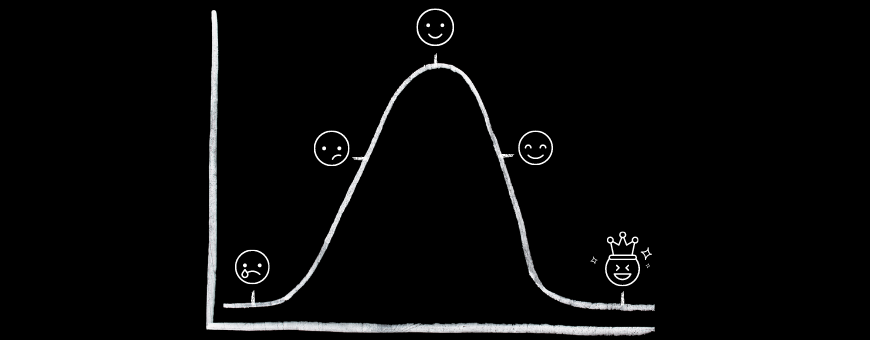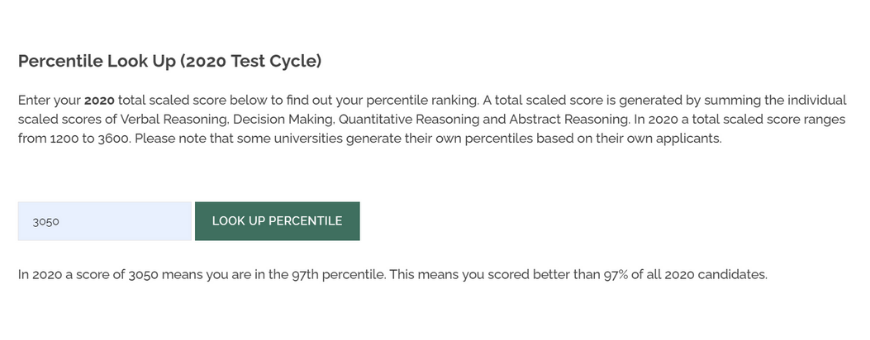UCAT Advice Universities and Courses
What does my UCAT score mean, really?
Maybe you’ve sat the UCAT and are looking at your score wondering if you’ll receive an interview offer. Perhaps, you’ve sat our UCAT Mock Exam Day (UCAT M.E.D.) and are confused by what your score and percentile means for your study before you sit the real UCAT. Either way, in this article, we will clear up the mysteries around UCAT scores, percentiles, and deciles and explain what your UCAT score means.
What does my UCAT score mean?
In short, your UCAT score is a way of quantifying your results from the UCAT by comparing them to all the other candidates. Because there are so many candidates sitting the UCAT, they need to be ranked against one another, after all, not everyone has all the qualities to work in the medical fields or become a dental surgeon or GP.
How do UCAT scores get calculated?
Your UCAT score is an aggregate mark out of 2700 for the 3 cognitive subtests (that require logic and maths skills) and a score out of 900 for Situational Judgement.
Your score is calculated from the question you got correct in the 4 subtests. You only get marks for correct answers and don’t lose marks for wrong answers.
Your score is a reflection of your ability in each subtest and is calculated using a complex scaling method. It is not a simple reflection of how many questions you got right. If you are interested in some more details about how it is calculated, check out this article, but in the end, it doesn’t matter – the more questions you get right, the higher your score.
This score out of 2700 can be used as a rough guide for how you will go in getting an interview from a university.
For example, Queen Mary University of London offered interviews for 2024 entry to home applicants who scored over 2620, while international applicants required a minimum UCAT score of 2950. Similarly, UNSW in 2025 did not offer interviews to students who scored below the 50th percentile of the UCAT ANZ.
So what are percentiles and deciles and how do they affect my UCAT score?
A percentile is a way of quantifying your ranking – based on your UCAT score – against other UCAT candidates. It simply tells you the percentage of people you beat. If you ranked in the 82nd percentile, it means you beat 82% of other people.
The percentile is not a percentage of your score. So, don’t try and figure out what percentile your score equates to because you can’t do that unless you know everybody else’s score.
A decile is similar to a percentile, except that your grouping people in blocks of 10%. If you scored in the 8th decile, that means you fall in the 80-90 percentile, and you beat at least 80% of other people.
So, what’s that mean? 10th decile is low, and not good. While the 1st decile is fantastic. The scores in-between fit into a bell curve, the vast majority of candidates will fit into the bell while the outliers low and high will populate the fringes to the left and right.

Your UCAT score is scaled against others in a bell curve. Most people are in the middle. Candidates on the fringes either did poorly or exceptionally well.
Once you receive your UCAT score, you can enter it on the UCAT website for the UK or ANZ and receive your percentile ranking:

Above is the UK UCAT percentile calculator.
So, where does my UCAT result sit? Did I do well in the UCAT?
Working from historical data to predict performance in the UCAT is an inexact science as the scaling will change year on year depending on the cohort’s performance.
For example, the UCAT ANZ mean scores for the cognitive subtests for 2021/2022 were:
- 2022: 2527
- 2021: 2481
And the UK UCAT mean scores for 2021/2022 were:
- 2022: 2511
- 2021: 2483
So, the 2022 mean was higher than the 2021 mean, this made the deciles (and therefore percentiles,) jump up.
Here are the detailed scores and decile stats for both years for the UK and ANZ:
| Decile rank | 2024 UK | 2023 UK | 2024 ANZ | 2023 ANZ |
| 1st – 1-9 percentiles | 2140 | 2150 | 2150 | 2160 |
| 2nd – 20-29 percentiles | 2260 | 2270 | 2290 | 2290 |
| 3rd – 30-39 percentiles | 360 | 2360 | 2390 | 2384 |
| 4th – 40-49 percentiles | 2440 | 2440 | 2480 | 2470 |
| 5th – 50-59 percentiles | 2520 | 2510 | 2570 | 2550 |
| 6th – 60-69 percentiles | 2590 | 2580 | 2660 | 2630 |
| 7th – 70-79 percentiles | 2680 | 2660 | 2770 | 2730 |
| 8th – 80-89 percentiles | 2780 | 2760 | 2900 | 2840 |
| 9th – 90-99 percentiles | 2920 | 2890 | 3060 | 3000 |
| Mean Score | 2523 | 2516 | 2588 | 2563 |
| Decile rank | 2022 UK | 2021 UK | 2022 ANZ | 2021 ANZ |
| 1st – 1-9 percentiles | 2120 | 2150 | 2130 | 2150 |
| 2nd – 20-29 percentiles | 2250 | 2270 | 2260 | 2280 |
| 3rd – 30-39 percentiles | 2340 | 2360 | 2360 | 2360 |
| 4th – 40-49 percentiles | 2420 | 2430 | 2450 | 2440 |
| 5th – 50-59 percentiles | 2500 | 2500 | 2530 | 2520 |
| 6th – 60-69 percentiles | 2570 | 2570 | 2610 | 2600 |
| 7th – 70-79 percentiles | 2660 | 2640 | 2710 | 2700 |
| 8th – 80-89 percentiles | 2750 | 2730 | 2830 | 2810 |
| 9th – 90-99 percentiles | 2880 | 2850 | 2980 | 2960 |
| Mean Score | 2499 | 2500 | 2540 | 3536 |
| Decile rank | 2020 UK | 2019 UK | 2020 ANZ | 2019 ANZ |
| 1st – 1-9 percentiles | 2170 | 2170 | 2150 | 2140 |
| 2nd – 20-29 percentiles | 2290 | 2280 | 2280 | 2260 |
| 3rd – 30-39 percentiles | 2370 | 2360 | 2370 | 2335 |
| 4th – 40-49 percentiles | 2450 | 2420 | 2440 | 2405 |
| 5th – 50-59 percentiles | 2510 | 2480 | 2520 | 2470 |
| 6th – 60-69 percentiles | 2580 | 2540 | 2590 | 2540 |
| 7th – 70-79 percentiles | 2650 | 2610 | 2680 | 2610 |
| 8th – 80-89 percentiles | 2730 | 2690 | 2780 | 2710 |
| 9th – 90-99 percentiles | 2850 | 2800 | 2920 | 2850 |
| Mean Score | 2511 | 2483 | 2527 | 2481 |
The UCAT scores reflect the lowest score to fit into that decile.
Universities use the percentiles to determine which candidates qualify for interview offers by using them as cut-offs. Different universities will have different cutoffs.
Will I get an offer? How do I tell from my marks?
Different universities also apply their own scaling weighting to results to determine who will receive an offer.
Additionally, university cut-offs will change from year to year based on the overall results.
To determine if you will receive an offer for a particular score, you should check the course admissions page. We have a University Guide for both the UK and ANZ with past cutoffs for courses, but you should use these as a guide only. The university admissions page for each institution will be the best source of up-to-date information.
Having said that, you can use historical data across a few years as a guide to see how your score and percentile qualify, or not.
Your UCAT decile doesn’t say if you will or won’t get into uni, that depends on what the institutions want. However, a lower decile increases your chances of being offered an interview or position. For example, a student scoring in the 4th decile is more likely to receive an offer than a student scoring in the 7th decile.
What about my Situational Judgement score?
Different institutions want different scores for the Situational Judgement subtest. Some universities don’t take the subtest into consideration at all and run their own MMI program to assess candidates emotional intelligence.
You should check with the university that you wish to apply for to see what their entrance requirements are.
The UCAT ANZ does not calculate Bands for the Situational Judgement subtest. However, if you’re curious about what Band you sit at, here are the approximations:
| Percentile | Band |
| 80% – 100% (top 20%) | 1 |
| 50%-80% | 2 |
| 20%-50% | 3 |
| Bottom 20% | 4 |
I sat the free UCAT Mock Exam Day (UCAT M.E.D), what does my score mean?
The UCAT Mock Exam Day (UCAT M.E.D.) is UCAT Masterclass’ free global mock exam. It functions much like the real UCAT where candidates from all over the world sit a precise simulation of the UCAT. Like the UCAT it is scored out of 2700 for the cognitive subtests and 900 for the Situational Judgement Subtest.
All candidates who sit the UCAT M.E.D. receive their scores out of 2700 the cognitive subtests and 900 for the Situational Judgement subtest.
These results are calculated and scaled to provide a ranking for each candidate in comparison to all other candidates. If you sat the UCAT M.E.D. , you should use the UCAT M.E.D. score you received and the percentile decile ranking to plan on how to improve your score.
Don’t panic!
Sitting the UCAT M.E.D. gives you the advantage of trying things out and seeing how you rank against some of your peers well before you sit the UCAT. This means that you can target your weaknesses and improve your results in plenty of time for the actual UCAT.
Improve your UCAT score before the UCAT!
Sit a full mock UCAT exams in our UCAT exam simulator and receive an accurate score and decile ranking against other candidates. Learn more.
